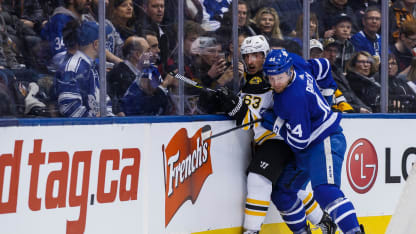Both the Bruins and Leafs are led by elite, skilled forwards that can hurt the opposition at even-strength, on the power play and on the penalty kill. Toronto has an edge in depth up front, as much of Boston's offence is generated by their top line of centre Patrice Bergeron and wingers Brad Marchand and David Pastrnak; that top line produced 106 goals and 260 points for the Bruins, and although centre David Krejci is the only other Bruins skater who had more than 53 points, Boston also has youngsters Jake DeBrusk (27 goals) and Danton Heinen, and veterans Charlie Coyle and David Backes to rely on.
The Leafs, on the other hand, take pride in the balance that exists among their group of forwards: Toronto finished the season with seven scorers of at least 20 goals (including blueliner Morgan Rielly) - and that's a feat as impressive as it is rare. Centre John Tavares led the team in the goals department, netting 47 (and 88 points) in his first season as a Leaf; and though centre Auston Matthews missed 14 games because of injury, he still amassed 36 goals (and 73 points) in 68 games.
In addition, winger Mitch Marner set new career-highs across the board on offence, scoring 26 goals (beating the 22 he scored last season) and putting up a team-best 68 assists (beating his previous high of 47), a number that was fourth-best in the entire NHL in 2018-19. Marner led all Leafs forwards with an ice-time average of 19:49, and Toronto head coach Mike Babcock was comfortable playing him in all situations, so expect to see him play a central role throughout the post-season.







